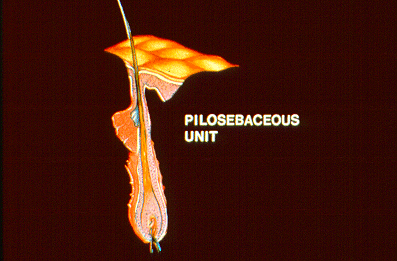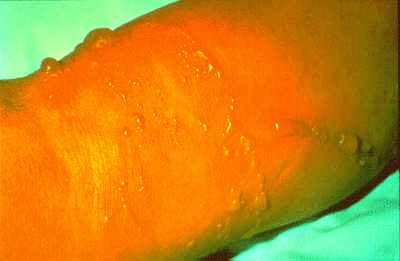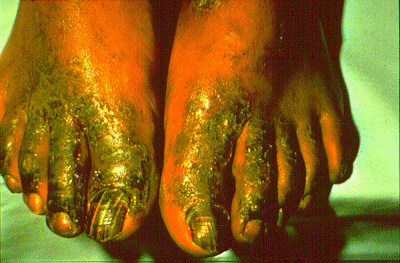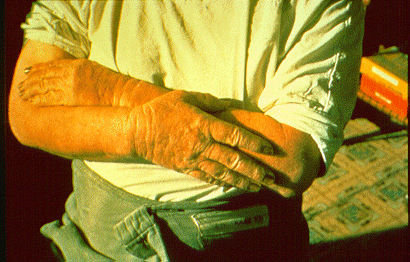Occupational Dermatoses
NOTE: This page is archived for historical purposes and is no longer being maintained or updated.
Slides 16 to 20
Slide 16 - Pilosebaceous Unit

The pilosebaceous unit can be responsible for early penetration of substances through the skin before diffusion via the transepidermal route reaches its peak. The sebaceous glands are particularly vulnerable to external contactants that have a lipid affinity.
Slide 17 - Morphologic Correlations

There are a number of common clinical patterns which arise when certain target areas of the skin are affected by various environmental chemicals and physical agents. These morphologic patterns sometimes provide a clue to the etiologic agents involved.
Slide 18 - Contact Dermatitis, Acute

This arm shows a painful, acute contact dermatitis form exposure to the strong irritant, ethylene oxide. The arm is markedly swollen and shows an acute vesiculo-bullous dermatitis. A similar pattern may be seen on the basis of contact allergy.
Slide 19 - Contact Dermatitis, Subacute

This patient developed a bilateral and symmetric sub-acute dermatitis from the rubber accelerator, mercaptoben zothiazole, which was leached from the rubber portion of his work shoe as a result of sweating. In this case there is some edema and erythema with an eczematous eruption.
Slide 20 - Contact Dermatitis, Chronic

The hands, wrists and forearms are the most frequent sites of involvement in cases of industrial contact dermatitis. The hands and wrists of this worker with a chronic dermatitis show the effect of long term exposure to a solvent, in this case kerosene, which was used for cleaning the skin. The skin markedly thickened, hyperpigmented, dry and fissured, itching is usually a major symptom.
- Page last reviewed: January 5, 1998 (archived document)
- Content source:
- National Institute for Occupational Safety and Health Health Effects Laboratory Division (HELD)


 ShareCompartir
ShareCompartir